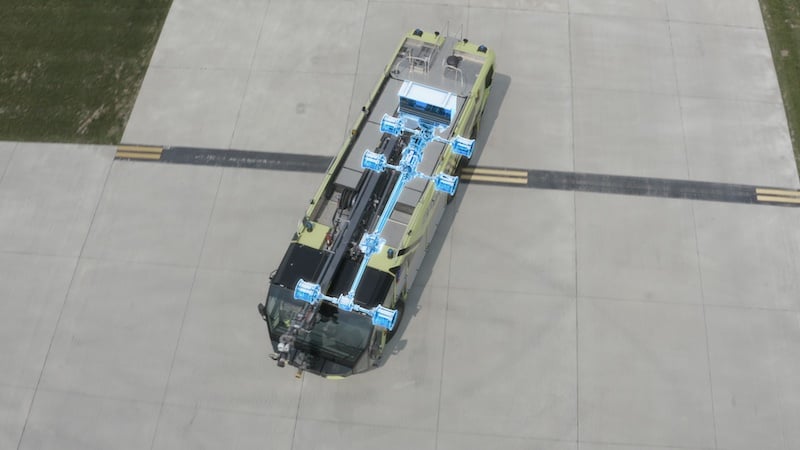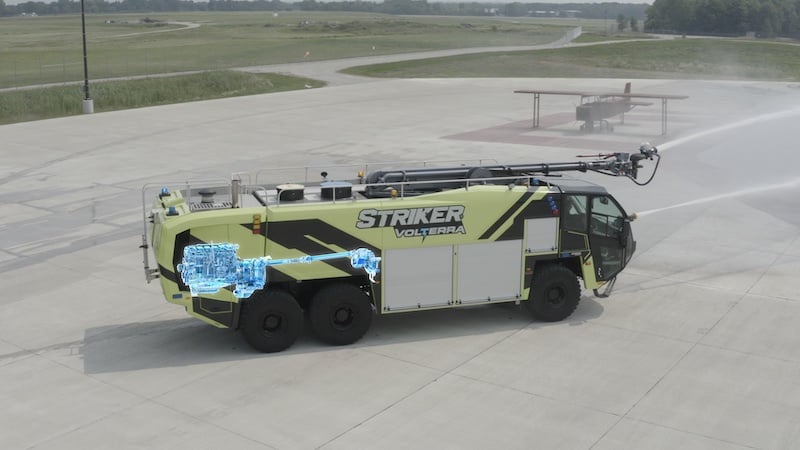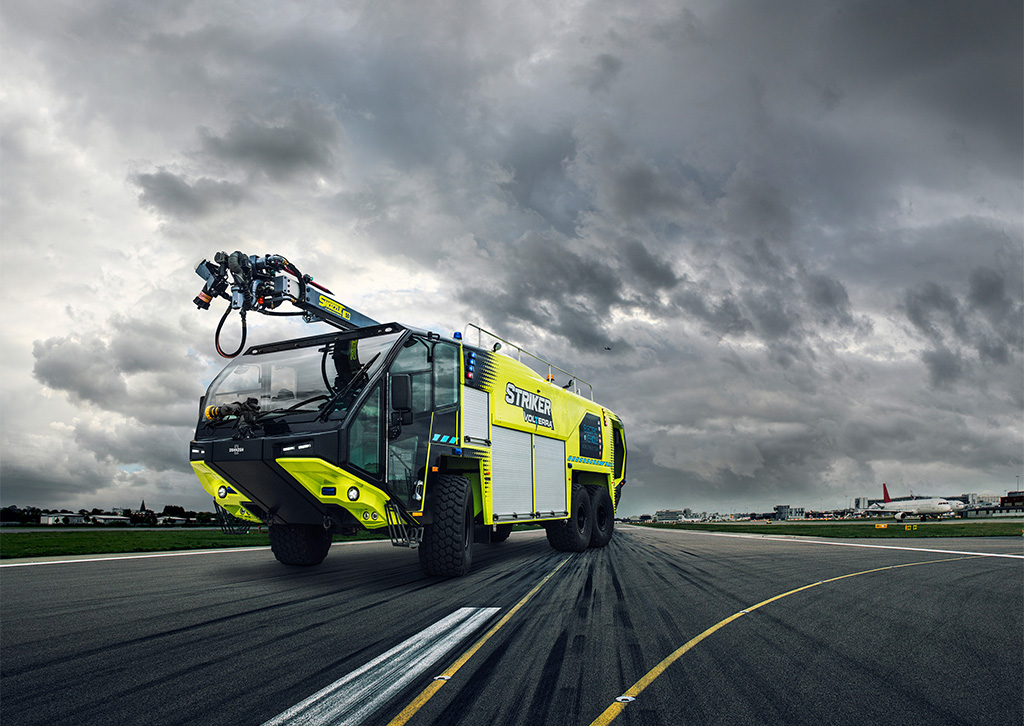
How Does Emergency Response Change with an Electric Vehicle?
Ensuring uncompromised response to emergencies is vital to supporting firefighters and their critical mission to save lives. The Striker Volterra ARFF vehicle is fully tested and compliant to all NFPA 414 and ICAO standards.
NFPA 414 requires ARFF vehicles meet a two-hour full rated discharge requirement. A fully electric vehicle requires a very large amount of energy in order to meet this requirement. Once the power is depleted, the battery needs to be recharged, or a range extending energy source such as a combustion engine must be used.
In contrast, the Striker Volterra ARFF vehicle can continue to operate at full performance with respect to driving and pumping. The firefighter does not need to react or adjust to a reduction in performance based on the battery’s state of charge, making the two-hour pump discharge requirement much easier to achieve.
The Striker Volterra ARFF’s Uncompromised Performance:
Rapid Response - 0-50 mph (0-80 kph) in 25 seconds. The vehicle can achieve 28% improved acceleration when fully loaded, resulting in a quickened response time.
Pump and Roll - The advanced powertrain continuously powers the pump. This allows the crew to have the vehicle in motion while still powering the pump.
Stationary Pumping - Utilizing the internal combustion engine to efficiently power the water pump, the vehicle’s Command Zone Control System optimizes engine RPM based on water pump requirements to reduce emissions and noise.
Operation of the Striker Volterra ARFF is virtually identical to traditional Striker ARFFs with a diesel drivetrain, eliminating the need for additional operator training and ensuring superior response:
6x6 Striker Volterra ARFF Vehicle Configuration:
- Seating capacity: 5
- TAK-4® all-wheel independent suspension
- 50’ (15.2 m) Snozzle® HRET with Oshkosh® K-Factor™ piercing tip alignment system
- 3,170 Gallon (12,000 Liter) water tank
- 2000 GPM (7,570 LPM) water pump
- 550 lb (225 kg) dry chemical powder system
- Scania DC13 engine
- Oshkosh power divider
- Modular cab design
- Center steer driving position
- Industry-leading forward visibility
- Ergonomic control placement

.png)



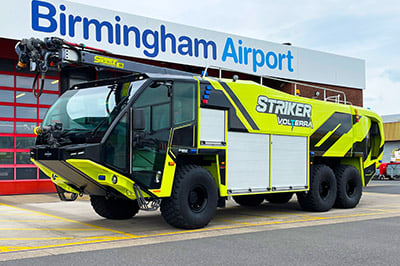 Reduced and zero emissions vehicles have become increasingly popular in recent years as consumers, businesses, and governments become more conscious of their impact on the environment. The Striker Volterra ARFF vehicle leverages the latest advancements of EV technology, giving airports and their fire departments a solution that helps them meet environmental goals and protects firefighters, while providing exceptional and uncompromised capabilities for emergency response.
Reduced and zero emissions vehicles have become increasingly popular in recent years as consumers, businesses, and governments become more conscious of their impact on the environment. The Striker Volterra ARFF vehicle leverages the latest advancements of EV technology, giving airports and their fire departments a solution that helps them meet environmental goals and protects firefighters, while providing exceptional and uncompromised capabilities for emergency response. One of the top considerations for electric vehicles is how the batteries are charged. Most EV drivetrains require a power source that connects the onboard batteries to the power grid. The Striker Volterra ARFF stands out from the rest of the industry because connecting to the power grid is not required for it to maintain a state of charge when the batteries are coupled with the diesel engine. As long as fuel is available, performance will not be degraded.
One of the top considerations for electric vehicles is how the batteries are charged. Most EV drivetrains require a power source that connects the onboard batteries to the power grid. The Striker Volterra ARFF stands out from the rest of the industry because connecting to the power grid is not required for it to maintain a state of charge when the batteries are coupled with the diesel engine. As long as fuel is available, performance will not be degraded.
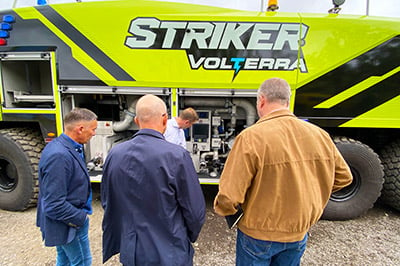

 After its introduction in June of 2021, the Striker Volterra ARFF vehicle embarked on a road show tour throughout North America and Europe to exhibit the vehicle’s innovative plug-in technology and exceptional performance capabilities. Demonstrations took place at seven locations in North America and nine locations in Europe, attracting attendees from over 13 countries from around the world. The events offered aircraft rescue and airport firefighting crews hands-on and immersive experiences with this new technology.
After its introduction in June of 2021, the Striker Volterra ARFF vehicle embarked on a road show tour throughout North America and Europe to exhibit the vehicle’s innovative plug-in technology and exceptional performance capabilities. Demonstrations took place at seven locations in North America and nine locations in Europe, attracting attendees from over 13 countries from around the world. The events offered aircraft rescue and airport firefighting crews hands-on and immersive experiences with this new technology.